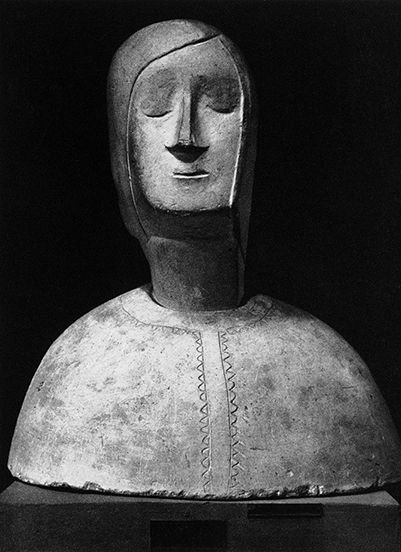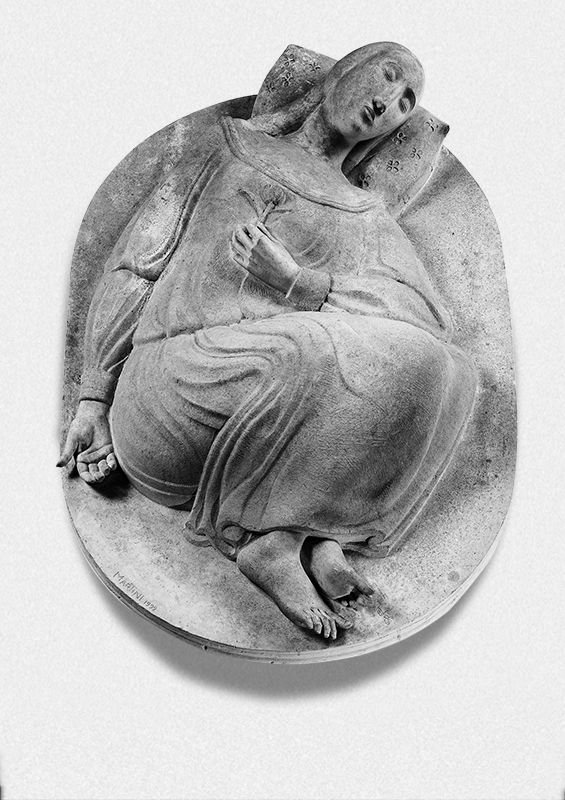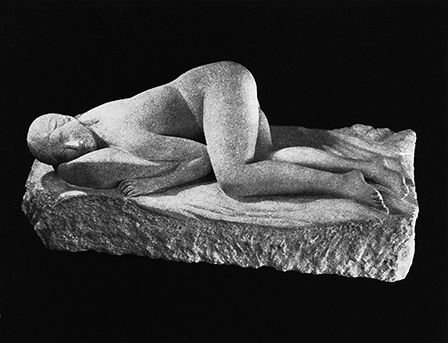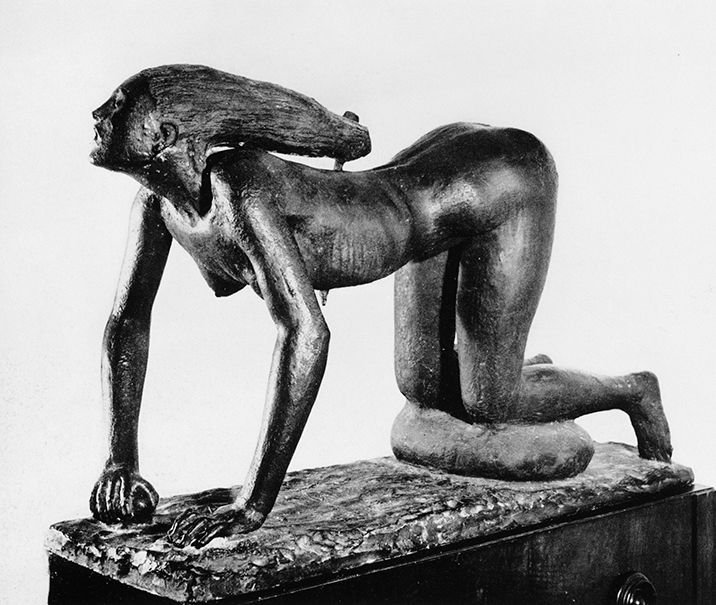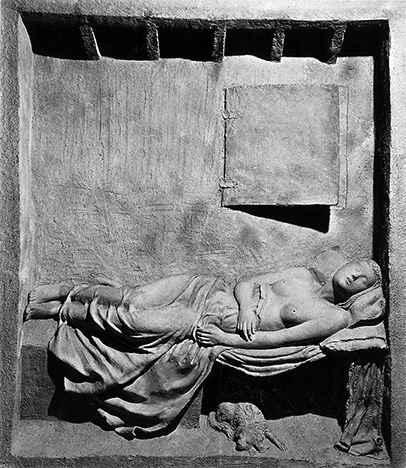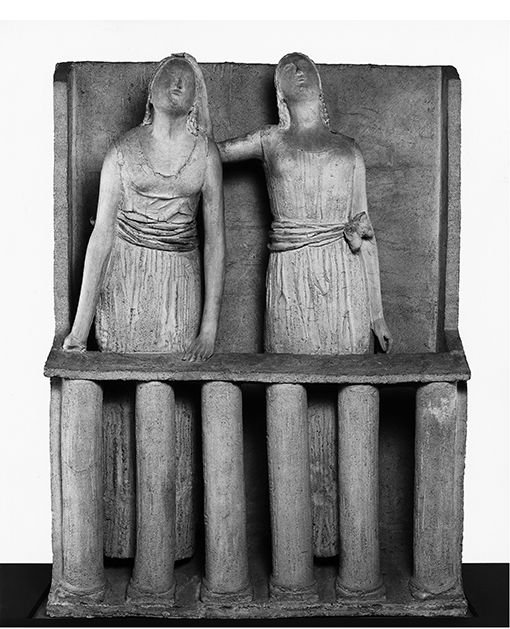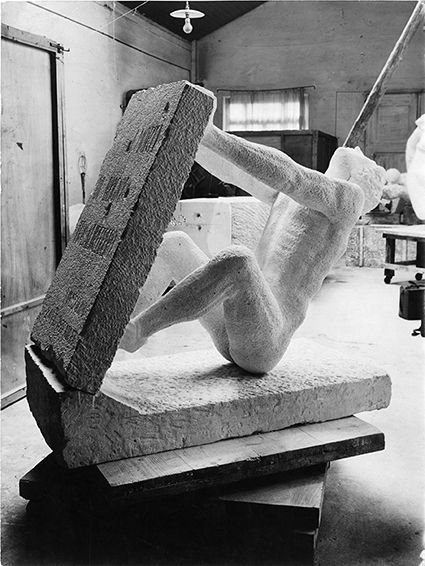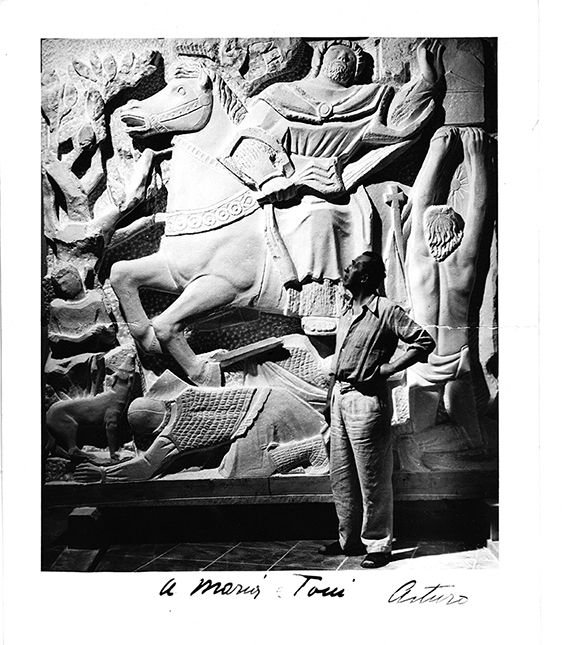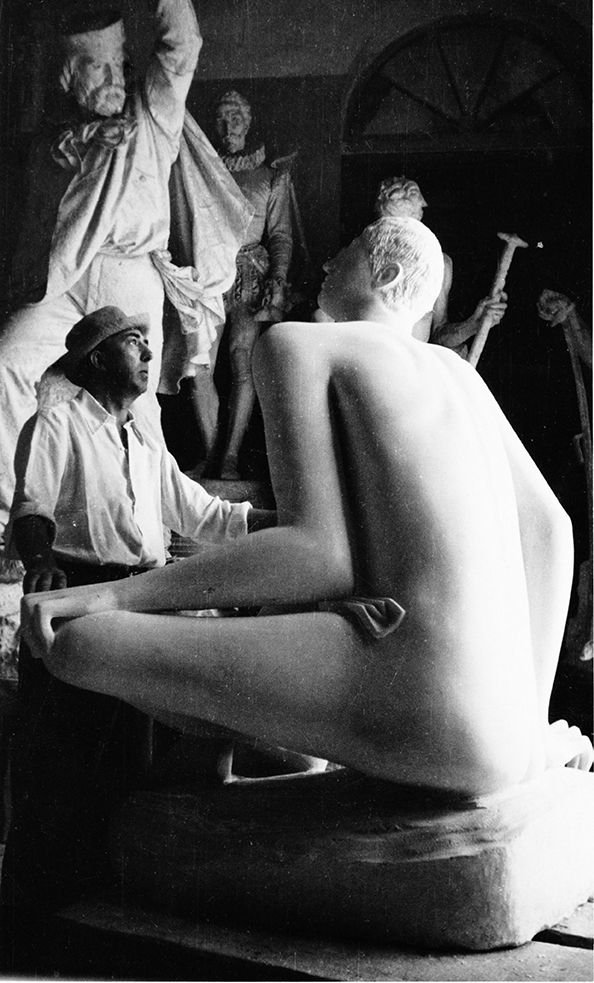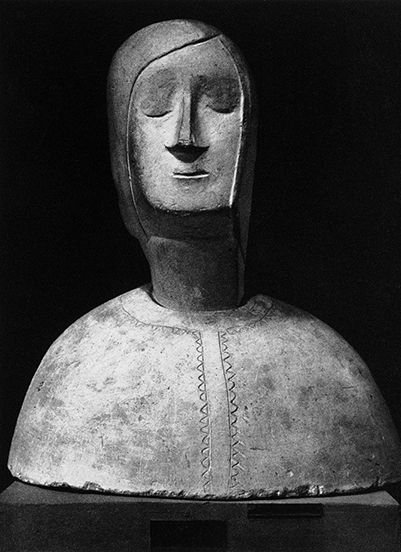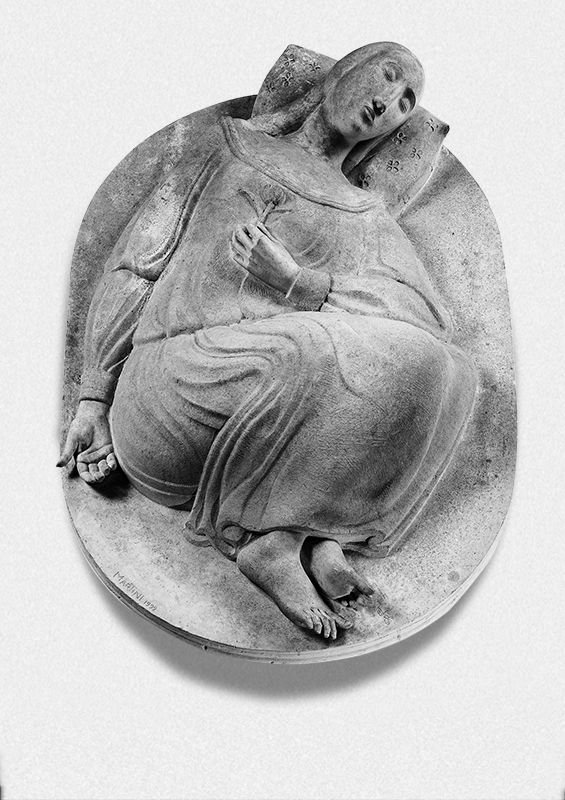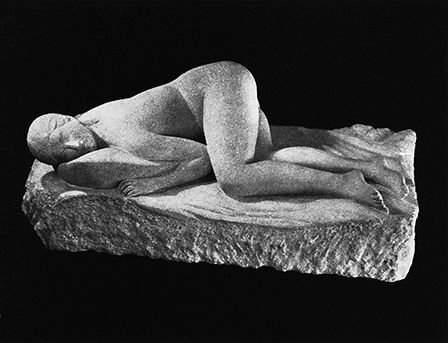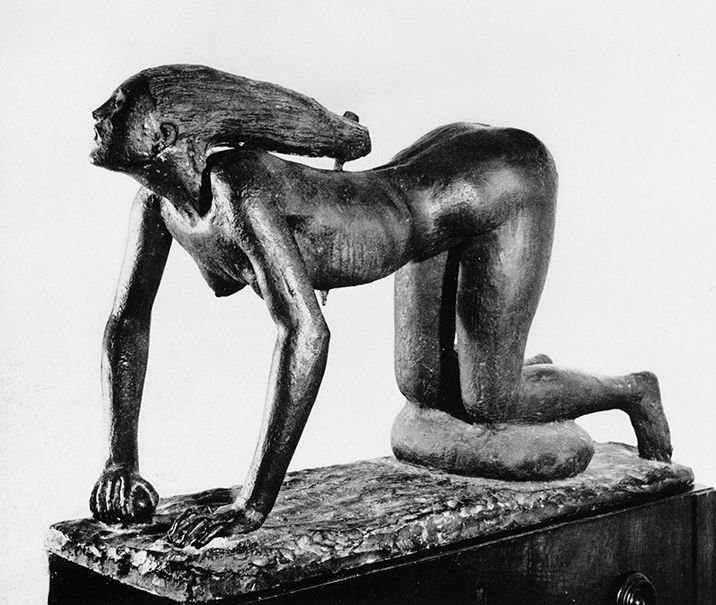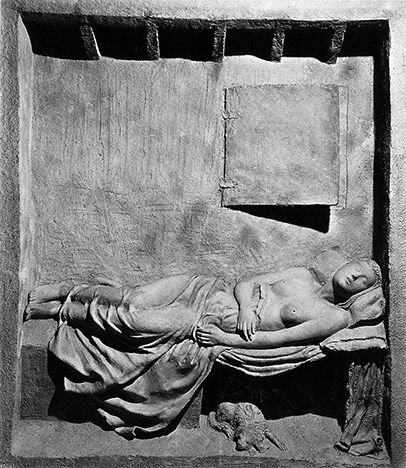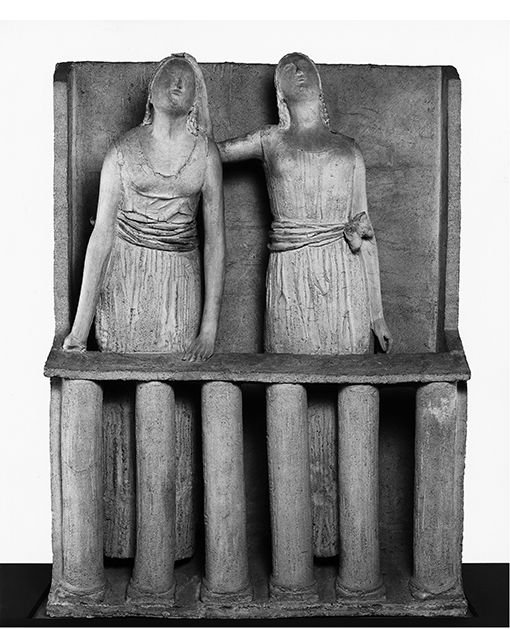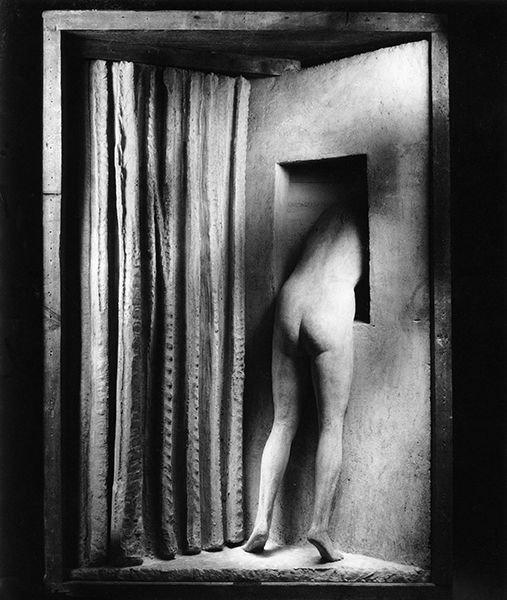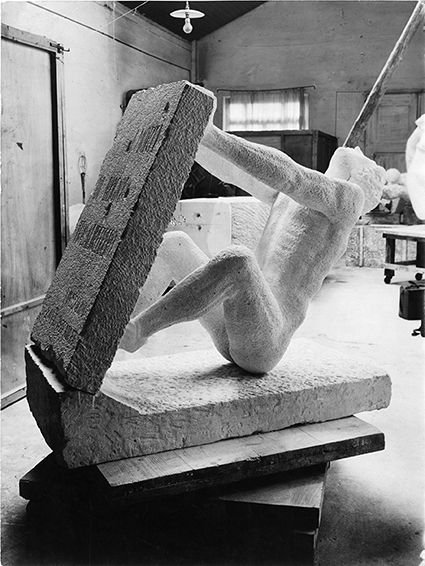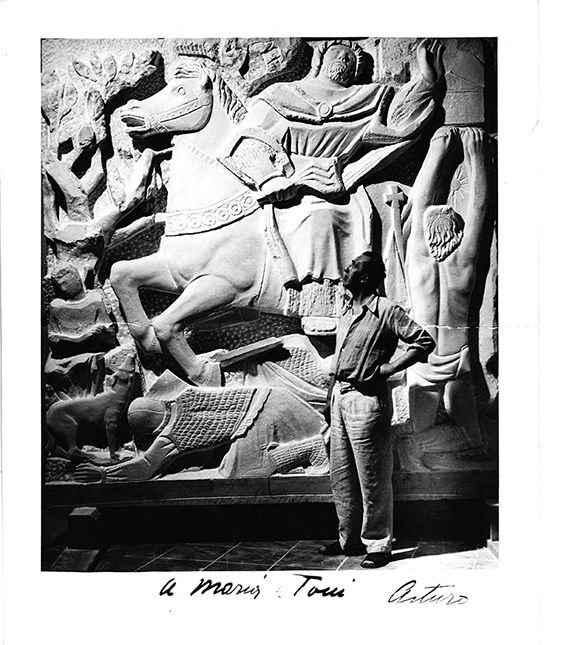Arturo Martini
La vita in figure
A prodigious sculptor skilled in creating images and narrating myths, Arturo Martini (1889-1947) gave himself over entirely to this “mysterious and egoistic” art that saps the energy of those who practise it, as the artist himself wrote. A life without epic moments is completely given over to reinventing the iconography, to the extent that he could have said, with the poet Lucio Piccolo, “life comes to me in images”. A childhood afflicted by poverty and family arguments in a Treviso that was still mediaeval, the early talent at modelling clay, his employment while still a young boy in a goldsmith’s workshop, the unexpected bursary that allowed him to study in Venice with the sculptor Urbano Nono – these were the early milestones in the life of an individual born “in wretched circumstances” who was however destined to renew the plastic arts. The trajectory of his life then took him to Munich in 1909, a difficult time economically but with plenty of stimuli, and to Paris in 1912. At the same time, he was also one of the “rebels” of Ca’ Pesaro and was a signatory to Futurism.
By the end of the war, Martini was already thirty years old and, although recognized as one of the best interpreters of the new classic ideals as represented in Novecento and Valori Plastici, he still struggled to maintain himself and his wife Brigida. Only as he approached 40 was he able to enjoy a period of happiness that coincided in 1930 with falling in love with Egle, and in 1931 with the legendary prize of 100,000 lire at the Quadriennale di Roma. In this period, he produced magnificent work in terracotta and executed new masterpieces in stone and in bronze. His period of serenity, however, came to an end with a volte-face. At the peak of his fame, and with unprecedented rage, Martini railed against sculpture and accused it of being a “dead language”. To this inexplicable rejection was added, mercilessly, illness and the humiliation of having to undergo a purge in 1945, which weakened him to the point that he died just short of 58 years old. Elena Pontiggia narrates the everyday and artistic events in Martini’s life with exemplary lucidity and clarity, embellishing the book with new information that sheds a new light on his artistic development.
Textual index
Prima parte
Il tempo degli esordi
1. «Mi meraviglio di essere nato». L’infanzia, la formazione
2. Da Troubetzkoy a Medardo Rosso. L’Expo del 1906 e Venezia
3. 1909. La “tragedia monegasca”
4. Tra Ca’ Pesaro e Parigi (1910-1912)
5. “Arturo Martini futurista” e il vespaio delle polemiche
6. Giurie, giudizi, giudici. Roma, Parigi e ritorno (1914-1915)
Seconda parte
Dalla fame alla fama
7. La guerra e l’officina. Brigida (1916-1917)
8. Il “libro muto” e il sasso. Faenza, Rovenna, Milano
9. Tra Vado e gli etruschi. La stagione di Valori Plastici (1921-1922)
10. Tra Vado e la rocca da aquile. Il Medioevo di Anticoli Corrado
11. Il Novecento Italiano e Il figliol prodigo (1926-1927)
12. Donne di creta, donne di cuori. La Pisana, Egle
Terza parte
La stagione del canto
13. Il forno-studio, il trionfo alla Quadriennale (1930-1931)
14. La Biennale di Venezia del 1932 e il “pubblico inganno” dei concorsi
15. L’età della pietra, l’età del bronzo (1933-1937)
Quarta parte
Dalla scoperta del marmo alla morte della scultura
16. La rivelazione di Carrara 199
17. Il sogno della pittura, la fatica dei monumenti (1940-1942)
18. Un accademico poco accademico. Venezia, gli anni della crisi
19. Dal processo di epurazione a Palinuro. Finale di partita (1945-1947)
Arturo Martini


